- Quick Read
- Deep Read ( 7 Min. )

Why is Christian Science in our name?
Our name is about honesty. The Monitor is owned by The Christian Science Church, and we’ve always been transparent about that.
The Church publishes the Monitor because it sees good journalism as vital to progress in the world. Since 1908, we’ve aimed “to injure no man, but to bless all mankind,” as our founder, Mary Baker Eddy, put it.
Here, you’ll find award-winning journalism not driven by commercial influences – a news organization that takes seriously its mission to uplift the world by seeking solutions and finding reasons for credible hope.
Explore values journalism About usIn Today’s Issue
- Build Back Better or boondoggle? Why Biden’s bill is so divisive.
- Xi Jinping, “chairman of everything,” secures his future
- NFL embraces betting. What message is it sending student-athletes?
- Harnessing rainwater for later use: Ancient solution to modern extremes
- A stranger’s act of kindness restored hope, and changed a life
Monitor Daily Podcast
- Follow us:
- Apple Podcasts
- Spotify
- RSS Feed
- Download
TODAY’S INTRO
A home for the holidays? Volunteers needed to foster pets.
How would you like to host a furry guest this holiday season?
All across America overcrowded animal shelters are looking for fosters to provide temporary shelter for homeless dogs and cats. Many are running “Foster for Thanksgiving” or “Foster Through Christmas” promotions to lessen their load during one of their busiest times of year.
From Florida to California, Ohio to Oklahoma, shelters have been stressed by the pandemic. Staff have dwindled due to COVID-19 concerns. Donations have dropped off. A vet shortage has delayed rescue pet spay and neuter operations, causing a backlog in preparing animals for permanent homes.
Even short-term fostering is good for stressed animals. It gets young ones used to people – and gives people experience in handling pets.
The benefits can spread outward. Lori Irby, a Southern California woman, has fostered about 60 pets in recent years. She takes in three or four kittens at a time, cats so young they need to be bottle-fed.
She began bringing them to her work at a retirement home in Anaheim. Residents started dropping by to see them.
Long story short, the weekly “Kitten Therapy Day” at the residence has become a huge hit. A dozen or so residents attend to play with the kittens, which are put up for adoption at about the age of 8 weeks.
“For many, it’s the highlight of the week. ... There’s just something really warm and comforting about holding a purring kitten,” Ms. Kirby told The Washington Post.
Share this article
Link copied.

Help fund Monitor journalism for $11/ month
Already a subscriber? Login

Monitor journalism changes lives because we open that too-small box that most people think they live in. We believe news can and should expand a sense of identity and possibility beyond narrow conventional expectations.
Our work isn't possible without your support.
Build Back Better or boondoggle? Why Biden’s bill is so divisive.
The stark partisan divide over the bill reflects fundamentally different views about the role of government in Americans’ lives, particularly amid a pandemic.
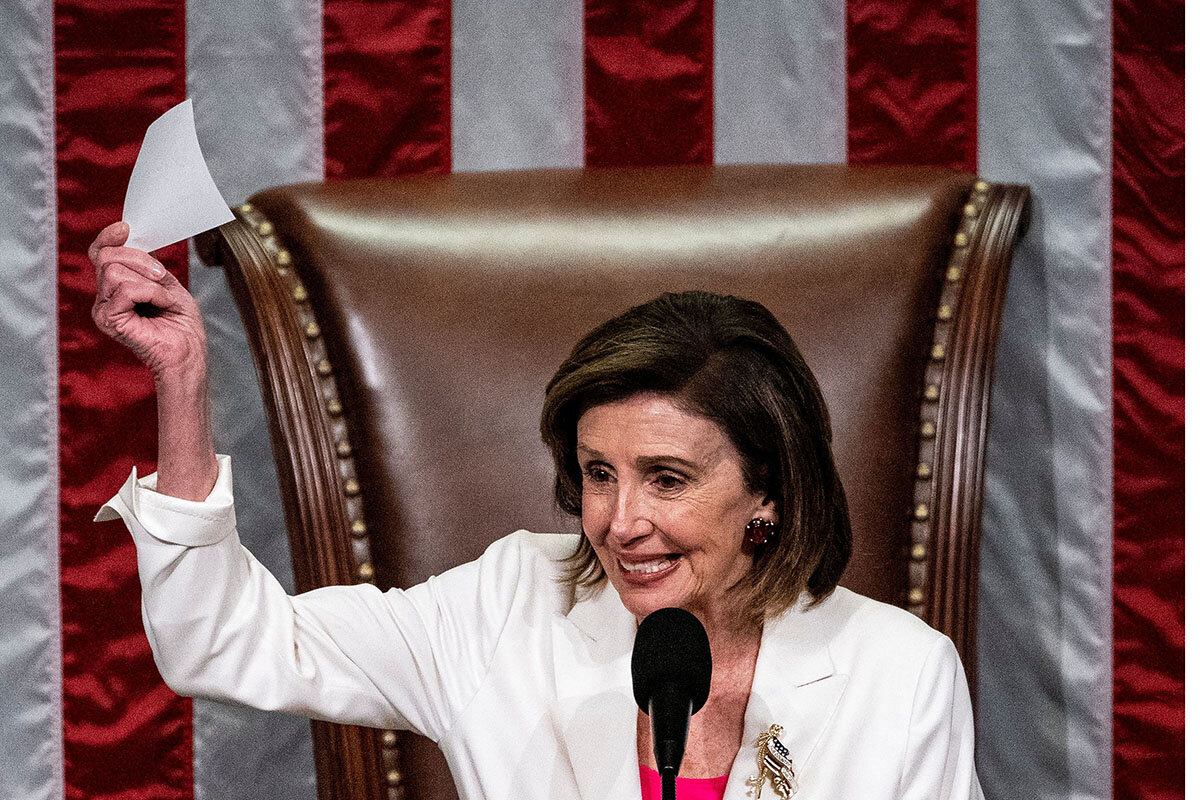
After months of negotiations, House Democrats narrowly passed the largest spending bill in history Friday morning. President Joe Biden’s Build Back Better Act is twice as big in real dollars as Franklin D. Roosevelt’s New Deal, according to the White House. Democrats are proud of that. Republicans are horrified.
The bill – which faces an uncertain fate in the Senate – promises historic investments in climate initiatives, health care, universal pre-K, and child care subsidies. It also brings changes in taxation and enforcement that Democrats say will address inequities and enable more citizens to flourish. The nonpartisan Congressional Budget Office estimates the reforms will cost $1.7 trillion, all but $160 billion of which will be offset by tax revenues and other measures.
“We have spent $6 trillion in three Middle East wars,” said Rep. Brian Higgins, a New York Democrat. Congress is finally committing to “nation building at home – in America and for Americans.”
Republicans excoriated the bill for spending too much and predicted it would drive up prices for everyday Americans.
“What should the role of government be in each of our daily lives, and what economic system best provides for opportunity and the well-being of the American people?” said GOP Rep. Lloyd Smucker of Pennsylvania. “This is ... a move toward socialism.”
Build Back Better or boondoggle? Why Biden’s bill is so divisive.
After months of negotiations and a record-long GOP speech that went until 5 a.m., House Democrats narrowly passed the largest spending bill in history this morning.
President Joe Biden’s Build Back Better Act is twice as big in real dollars as Franklin D. Roosevelt’s New Deal, according to the White House. Democrats are proud of that. Republicans are horrified.
Democrats say the bill – which still faces an uncertain fate in the Senate – promises historic investments in climate initiatives, health care, universal pre-K, and child care subsidies. It also brings changes in taxation and enforcement that they say will address inequities and enable more citizens to flourish. The nonpartisan Congressional Budget Office (CBO) estimates the reforms will cost $1.7 trillion, all but $160 billion of which it expects to be offset by tax revenues and other measures.
“Over the past two decades, we have spent $6 trillion in three Middle East wars,” said Rep. Brian Higgins, a New York Democrat, during a House debate Thursday. Now, he continued, Congress was finally committing to “nation building at home – in America and for Americans.”
Republicans excoriated the bill for disincentivizing work, saddling future generations with debt, and driving up prices for everyday Americans. They accused Democrats of exploiting the pandemic to expand government overreach with a deceptively named bill, which they say will amount to an “economic surrender” to China by raising the cost of doing business in America and pushing jobs overseas. They also challenge the nonpartisan estimate of the bill’s cost, saying its sweeping social reforms could add significantly to the national debt – particularly if temporary programs like child care subsidies are extended.
“I hope the American people are watching closely today, because there is a fundamental question being debated – and that is, what should the role of government be in each of our daily lives, and what economic system best provides for opportunity and the well-being of the American people?” said GOP Rep. Lloyd Smucker of Pennsylvania. “This is a move toward an entirely different economic system – it’s a move toward socialism. We know that doesn’t work.”
In the end, every Democrat except Rep. Jared Golden of Maine voted for the bill. All Republicans voted against it, save one who did not cast a vote.
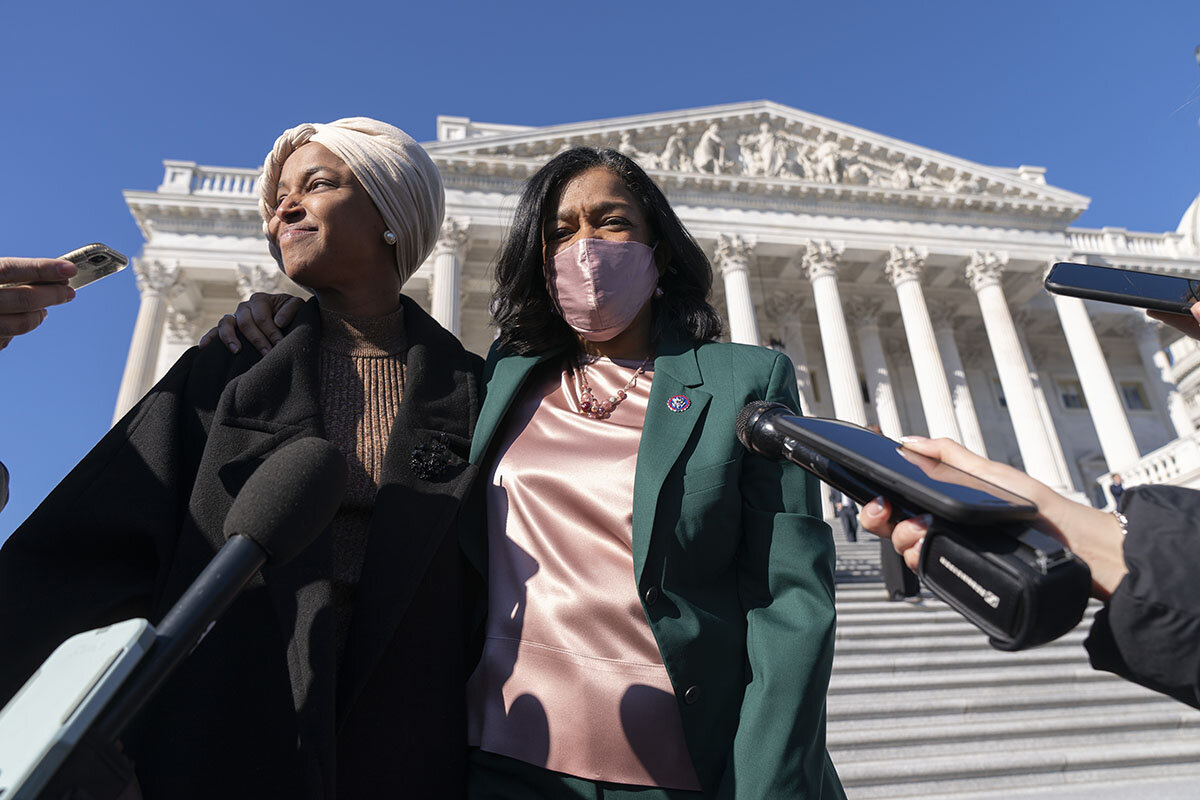
The stark partisan divide over the bill reflects fundamentally different views about the role of government in Americans’ lives, particularly amid a pandemic. What Democrats hail as a historic effort to lift people up, Republicans see as an irresponsible unspooling of red tape that will exacerbate the worker shortage and ultimately harm everyone from entrepreneurs to parents to corporations, whom they see as the engines of American prosperity.
But beyond the political soundbites, there are complicated questions about how the bill’s 2,135 pages of programs would affect the economy and voters’ pocketbooks.
For bean counters and critics, devil’s in the details
For example, the massive investment in child care subsidies aim to ensure low- and middle-income families don’t pay more than 7% of their income in child care costs. But those subsidies, together with a plan to pay child care workers a fairer wage, could dramatically drive up prices for families who are just above the qualifying income threshold, saddling them with up to $13,000 more in costs, according to an estimate by the left-leaning People’s Policy Project.
Democrats say they’ve addressed those concerns by raising the threshold to include those making up to 250% of their state’s median income, and argue that the subsidies – together with universal pre-K and an extension of the enhanced child tax credit – will help ease labor shortages that have contributed to supply chain delays and higher costs for consumers.
“Investment in child care and universal pre-K actually can help us loosen supply chain issues by releasing and unlocking a labor force that right now is staying at home even if they would prefer to work,” says Rep. Alexandria Ocasio-Cortez of New York, who cites those provisions along with an expansion of Medicare as among the most transformational for her constituents.
Then there’s the half-trillion dollars in climate initiatives, which Democrats say are urgently needed and will more than pay for themselves when factoring in the cost of inaction. Republicans argue those measures will further drive up gas prices, already more than 60% higher than a year ago, as well as the cost of heating fuel, already projected to be 30% more expensive this winter.
GOP Rep. Kelly Armstrong of North Dakota, who lives within 25 miles of his state’s largest ethanol plant and its largest wind farm, notes that the bill does nothing to address litigation and permitting, which could make it difficult to build the new energy infrastructure envisioned by the bill. It could also shutter small businesses, which would devastate communities in his state, he says.
“If you think it’s hard to put an oil pipeline in eastern Montana, try putting a high-voltage transmission line on the East Coast when the minute you put the first shovel in the ground you devalue every property in that suburb by 40%,” says Representative Armstrong.
But Democratic Rep. Joe Neguse of Colorado, whose district is currently battling wildfires, says the climate investments, particularly for wildfire prevention and mitigation, can’t come soon enough.
“The climate investments are going to be transformational for my community,” he says.
Republicans have also taken issue with a provision that would invest $110 billion to ease visa and work authorizations for immigrants amid a spike in illegal immigration and record opioid overdoses fueled by an 800% increase in fentanyl trafficking over the U.S.-Mexico border. Rep. Pramila Jayapal, an immigrant rights advocate who now chairs the Congressional Progressive Caucus, said the “humane” reforms would protect “Dreamers,” temporary protected status recipients, and essential workers, and ease the immigration backlog.
Another area of particular contention is a provision to raise the 2017 deduction limit of $10,000 for state and local taxes (SALT), which would mainly help individuals with six-figure incomes in blue states like California, New York, and New Jersey. Under the new provision, which may get cut in the Senate version of the bill, earners would once again be able to deduct those local and state taxes from their federal taxes owed.
Many progressives, including Representative Ocasio-Cortez and Sen. Bernie Sanders of Vermont, have said it’s hypocritical for Democrats to give a tax break to wealthy individuals as part of a bill that’s designed to address systemic inequities. But Democratic Rep. Josh Gottheimer of New Jersey, co-chair of the bipartisan Problem Solvers Caucus, says it’s not just the wealthy who are hit. High costs of living in his district mean that a household made up of a police officer and a teacher could be earning $200,000. With New Jersey property taxes the highest of any state, his constituents pay an average of $15,000.
Republicans pilloried the deduction, which they say rewards high taxation policies to the detriment of other Americans.
“All the time in this chamber people say, ‘It’s for the children,’ or ‘It’s for the kids.’ What hogwash,” said Rep. Jason Smith of Missouri, lead Republican on the House Budget Committee. He points out that the $360 monthly child tax credit will only last for a year, while the SALT deduction, which is estimated to cost nearly 50% more, will remain in effect for a decade.
The Committee for a Responsible Budget predicted the bill would cost $2.4 trillion, adding $750 billion to the deficit over the next five years, and $160 billion over 10 years. But the group cautioned that if temporary provisions like the expanded child tax credit were made permanent, the total cost would likely more than double to nearly $5 trillion – driving up the deficit.
Democrats said Republicans abandoned any claim to fiscal responsibility when they passed the massive 2017 tax cut package under President Donald Trump. The CBO estimated the package will add $1.5 trillion to the debt over a decade, with wealthy individuals seeing the greatest reduction in taxes.
“Republican criticism as it relates to so-called fiscal responsibility has zero credibility,” said Rep. Hakeem Jeffries, who chairs the Democratic caucus in the House. “We’re going to lift up everyday Americans and create a better pathway to the American dream.”
“Nobody elected Biden to be FDR”
Democratic leaders had promised a vote Thursday night, but in the final period of debate GOP Minority Leader Kevin McCarthy threw those plans into disarray when he started speaking at 8:38 p.m. and continued for 8 1/2 hours – surpassing by 25 minutes the previous record for longest House speech, by Speaker Nancy Pelosi.
Leader McCarthy railed on Democrats for spending trillions under “one-party rule” and failing to learn the lessons of the recent Virginia election, instead doubling down on programs that he said most voters don’t want and the country can’t afford.
Democrats countered his speech with polling showing that large majorities support various provisions, from lowering the cost of prescription drugs to creating clean energy jobs. But those surveys also noted that many respondents were relatively unfamiliar with the bill.
At one point, Mr. McCarthy quoted Democratic Rep. Abigail Spanberger of Virginia as saying, “Nobody elected Biden to be FDR.” In the chamber, Ms. Ocasio-Cortez piped up, “I did!”

Xi Jinping, “chairman of everything,” secures his future
Xi Jinping has sealed his dominance and secured an unchallenged future as China’s top leader. But doubts cloud his eventual succession.
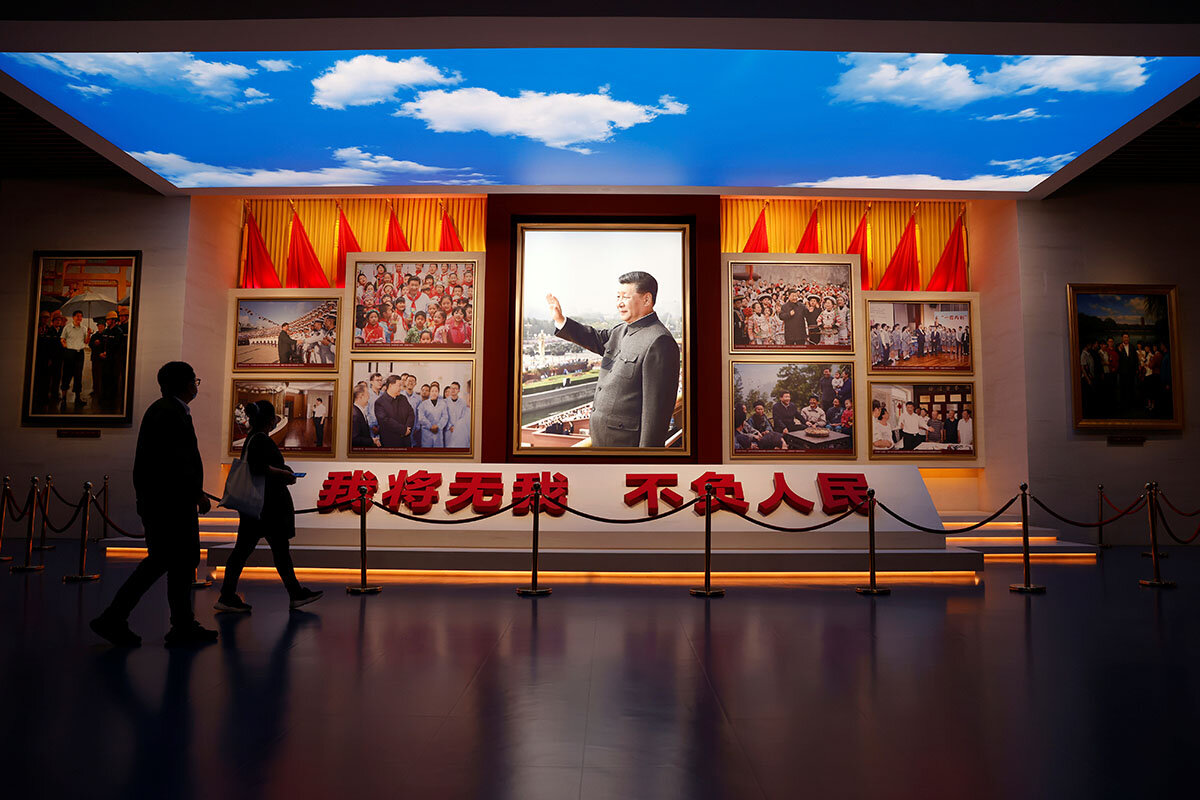
- Quick Read
- Deep Read ( 5 Min. )
With a vote last week in the Chinese Communist Party’s Central Committee, Xi Jinping appears to have put himself in an unassailable position to become China’s ruler-for-life.
A resolution passed by the Central Committee, listing the ruling party’s “major achievements” since its founding a century ago, highlights Mr. Xi’s role in restoring Marxism to the center of Chinese political life. It legitimizes his statements, actions, and policy decisions as Communist Party doctrine, making it very dangerous for anyone to challenge him.
He now seems set to become the first Chinese leader since Mao Zedong to be reappointed Communist Party general secretary for a third five-year term.
But Mr. Xi’s dominance brings risks for his country, some observers warn. It imposes ideological conformity and restrains policy debate, they say. Cautions Timothy Cheek, a China expert at the University of British Columbia in Canada, “The cost of ideological governance is to dampen innovation and creativity.”
Xi Jinping, “chairman of everything,” secures his future
With the Communist Party’s endorsement last week of a resolution lauding him and his ideology, Chinese leader Xi Jinping has vaulted into a position of rare supremacy. The vote all but clinches his power to rule as long as he chooses over the country of 1.4 billion people.
Mr. Xi is “a man on a mission” who sees himself as “responsible for all the greatness in China today,” says Steve Tsang, director of the SOAS China Institute at the University of London. “There is clearly no intention of him retiring.”
The political victory enshrines Mr. Xi’s vision for the nation in a document meant to endure for decades to come, and puts him in a virtually unassailable position. Yet his dominance, bolstered by a growing personality cult, imposes an ideological conformity that carries risks for China, some observers warn.
“The cost of ideological governance is to dampen innovation and creativity,” says Timothy Cheek, a history professor and expert in modern China at the Institute of Asian Research at the University of British Columbia. “They get security at the price of creativity.”
A plenum of the ruling Communist Party’s more than 300-strong Central Committee, the locus of power in China, passed a resolution last week on the party’s “major achievements” since its founding 100 years ago. Its full text was published Tuesday.
It is hard to overstate the importance of the so-called historical resolution, only the third such document approved by the Central Committee since the party’s founding in 1921, experts say.
Mao Zedong, who led China’s communist revolution, orchestrated the first resolution in 1945 to criticize the party’s early founders. The second was secured in 1981 by then-paramount leader Deng Xiaoping, who used it to chastise Mr. Mao’s radicalism and pave the way for market-oriented economic reforms and China’s opening to the outside world.
A new brand of Marxism
The new resolution marks a radical departure from Mr. Deng’s pragmatism, encapsulated in his famous aphorism, “Black cat or white cat, if it can catch mice, it’s a good cat.” Rather, it praises Mr. Xi for restoring the centrality of Marxism to Chinese politics.
“This is the recasting of the unwritten constitution of political life in China. This is it. End of discussion,” says Professor Cheek. The document legitimizes Mr. Xi’s statements, actions, and policy decisions as Communist Party doctrine, making it highly dangerous for anyone to criticize them.

Previous resolutions have “settled debate and laid down the law that worked for the next 20 years,” and this one is unlikely to be any different, Professor Cheek adds.
The resolution essentially places Mr. Xi beyond challenge in the run-up to next year’s 20th Party Congress, when he is expected to become the first leader since Mr. Mao to be reappointed general secretary for a third five-year term. Under Mr. Xi, who took charge of the party in 2012, and is also president, the government eliminated presidential term limits set in place by Mr. Deng.
Beyond elevating Mr. Xi, the historical resolution also effusively praises his vision for China’s rise and credits him with creating a new brand of Marxism uniquely suited to the country.
“Comrade Xi Jinping … has set forth a new series of original ideas, thoughts, and strategies on national governance,” reads the resolution. The ideology Mr. Xi has founded “embodies the best of the Chinese culture and ethos in our times and represents a new breakthrough in adapting Marxism to the Chinese context.”
In short, it says, “this is the Marxism of contemporary China and of the 21st century.”
The emphasis on ideological governance underscores one of Mr. Xi’s most fundamental concerns – that China’s post-Mao shift toward a market economy and opening to foreign influences has undermined the population’s faith in communism.
“Xi Jinping has made it very clear that he sees the fall of the Soviet Union as coming from a loss of ideological coherence, and his job … is to fix that in China before it’s too late,” says Professor Cheek.
The resolution echoes this concern, noting “profound changes in the Chinese people’s ways of thinking.” The party’s “ideological work shapes the collective mind” and is vital to keeping China strong, it says. “Without a thriving culture and firm confidence in it, the Chinese nation cannot achieve rejuvenation,” it says.

“No successors in sight”
Explaining why the historical resolution was necessary, Mr. Xi wrote that it will forge “stronger unity in will and action” among Communist Party members and rally the Chinese people as a whole.
Yet as Mr. Xi grows ever stronger, with his image looming on huge displays and books of his “thought” filling store shelves, experts point to the risks of centralized power and ideological conformity.
Political deliberations are constrained by Mr. Xi’s dominant role on a wide range of decision-making bodies – giving him the nickname “chairman of everything,” experts say. “The collective leadership of open debate and discussion behind closed doors has been replaced by an echo chamber,” says Professor Tsang.
Perhaps the greatest risk, China scholars say, is that Mr. Xi’s supremacy has left the country without a clear successor. If he serves another decade or more, an entire generation of experienced potential replacements will have aged out, says Willy Wo-Lap Lam, adjunct professor at the Chinese University of Hong Kong and an expert on Chinese politics.
“Xi has broken all the institutional rules very wisely set down by Deng – no personality cult, an orderly succession, and many others,” says Dr. Lam.
“There are no successors in sight,” he says, “and no one knows who will win (the title) ‘Xi’s favorite.’”

NFL embraces betting. What message is it sending student-athletes?
Legal sports betting has become accepted by many in the U.S. But the public also has ethical concerns – especially about effects on young people.

- Quick Read
- Deep Read ( 5 Min. )
Since 2018, when the U.S. Supreme Court overturned a law that largely prohibited sports betting, professional sports leagues have been steadily cutting deals with sports betting partners. The National Football League is a big recent example: NFL revenue from gambling deals is projected at $270 million this year alone.
Although only 14% of Americans find gambling immoral, 63% say operators of legalized gambling venues should have to implement responsible gambling measures, according to surveys reported by the National Council on Problem Gambling.
And the group cites one study finding that 16% of online sports gamblers met clinical criteria for a gambling disorder.
The ethical questions are particularly sensitive when it comes to young people. At H.D. Woodson High School in Washington, D.C., Howard Gilmore coaches receivers and is pondering the message student-athletes are getting.
“It’s not sending a good signal to them, because now they think this is OK to sports bet,” says Mr. Gilmore. His focus is on preparing the students for “life,” encouraging them to stay level-headed.
Amber Satterfield, whose son plays wide receiver at H.D. Woodson, worries about the game of football being diminished by the changes. “Everything is about money now,” she says.
NFL embraces betting. What message is it sending student-athletes?

The senior quarterback loves the game, his hometown Washington Football Team, and Lamar Jackson – the scrambling sensation he emulates – who plays for the NFL franchise down the road in Baltimore.
Novaun Lee, who’s ranked near the top of his class academically at H.D. Woodson High School in the District, has played the game since he was five, according to his mother. This year, though, there is something new when he and his teammates turn on the TV to watch the pro game: advertisements for the sports betting companies now in partnership with the National Football League.
“It’s all very new,” says Keith Whyte, executive director for the National Council on Problem Gambling. “This massive expansion of sports betting, it’s shifted, and it’s become popularized and normalized in our culture.”
With entertainers like Jamie Foxx and former NFL stars like the recently retired Drew Brees appearing on commercials for the NFL’s recently approved sportsbook operators, a betting app has gotten in the teenage quarterback’s line of sight. He downloaded the free FOX Bet Super 6 app, sponsored by Hall of Fame quarterback Terry Bradshaw, last month.
And while the legal betting age in D.C. is 18, Howard Gilmore, a coach at H.D. Woodson, questions whether the league is sending the right message to high school football players with the sportsbook and gambling partnerships.
“It’s not sending a good signal to them because now they think this is OK to sports bet,” says Mr. Gilmore, who coaches wide receivers at his high school alma mater. He’s with a large majority of Americans in not labeling all gambling as immoral or irresponsible, but still seeing a need for guardrails. “You do have underaged kids that you’re targeting that look at [these ads] that have a desire to play in the NFL.”
His focus is on preparing the student-athletes that he coaches for “life,” encouraging his players to stay levelheaded. H.D. Woodson associate head coach Rodney Williams also desires to help the student-athletes “get ready for life,” encouraging them to read, and preaching the message of remaining steadfast and focused on the football field.
“When I say, ‘Something good happens,’ they say, ‘keep playing,’ when I say, ‘Something bad happens’ they say, ‘keep playing,’” the sixth-year coach says in an interview before repeating this message to the team at the end of pregame practice.
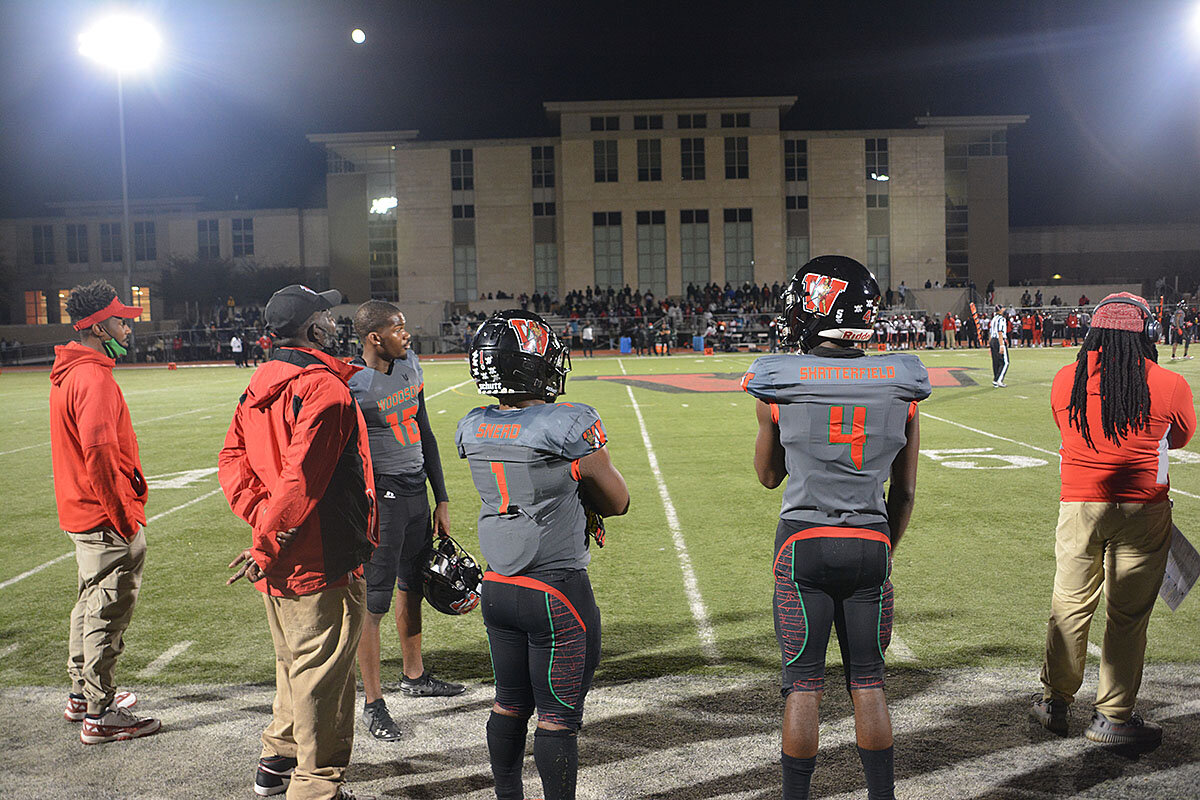
While his message of “keep playing,” taken out of context, could be an advertisement for gambling, Mr. Williams voices ambivalence when asked whether the league should be sponsoring sports betting.
“I don’t know,” Mr. Williams says. “They aren’t going to let their money stop, though.”
The NFL is projected to make $270 million in revenue from sports betting and gambling deals in 2021 alone.
Amber Satterfield, whose son, Omar, plays wide receiver at H.D. Woodson and hopes for an NFL career, also sees money at play in the league’s new stance. “They’re doing it for money,” she says, “everything is about money now.”
In the process, she says, the game of football is diminished.
Problem gambling
When a person’s betting activity tips toward “problem” status, it can have severe consequences for their financial and emotional well-being. Although only 14% of Americans find gambling immoral, 63% say operators of legalized gambling venues should have to implement responsible gambling measures, according to surveys reported by the National Council on Problem Gambling.
And the group cites one study finding that 16% of online sports gamblers met clinical criteria for gambling disorder.
But NFL Commissioner Roger Goodell, who once wrote in 2012 that the expansion of sports betting “threatens to damage irreparably the integrity of, and public confidence in, NFL football,” has had a different legal landscape to consider since 2018.
That year, the Supreme Court overturned the Professional and Amateur Sports Protection Act, a 1992 law that prohibited sports betting except in Nevada and a few other select locations. Pro leagues have been determining their relationships with gaming ever since, Mr. Whyte says.
Pro basketball was the first major league to make a deal with sports betting when the NBA announced a partnership with MGM in 2018. The National Hockey League announced a deal for DraftKings to be their official sports betting partner just last month, and Major League Baseball added DraftKings to BetMGM as their co-exclusive sports betting partners earlier this year.
The NFL has approved a total of seven sportsbook operators this year.
Seeking a balance
But last month, the NFL announced a partnership of a different kind, this time with the National Council on Problem Gambling, for a $6.2 million grant over three years to address problem gambling.
The NFL wants to make sure they have a “balanced approach” that is long-term and sustainable, says Mr. Whyte, whose organization plans to use the funds to upgrade their National Problem Gambling Helpline and for public service announcements.
He says his organization – which has never taken a position for or against legalized gambling – also has been advising the NFL on branding a “responsible gambling” message.
The NFL has limited the sports betting ads to six per broadcast, one per quarter with an additional ad pregame and at halftime. The American Gaming Association (AGA), which represents the U.S. casino industry, sets self-imposed restrictions on advertisements geared toward youth through its Responsible Marketing Code.
“It’s important to note,” says AGA senior vice president Casey Clark in an email, “legal sports betting offers regulatory oversight and protections for competition integrity, athletes, bets, and consumers that do not exist in the illegal market.”
Distinguishing the game from gaming
With bets now being placed “above the table,” in a legal manner, the question of distinguishing the game from the gaming is surfacing now too, especially as it relates to young people.
Mr. Whyte says the NFL saw some support “gaps,” including the need to do youth prevention, as a reason for the partnership with the National Council on Problem Gambling.
“We want to keep the game, the game,” Mr. Whyte says. He adds that the first time most student-athletes get a prevention message is when they get to college, while about 90% of NCAA male student-athletes who gambled for money had their first experience with gambling before college. About 5% of adolescents report gambling behavior that rises to the level of harm, he says, expressed in lack of control.
For the young quarterback, still not old enough to place a bet, he appears to be taking some steps toward keeping the game and gaming separate. Novaun says, in an interview, he learned about probability in his Advanced Placement statistics class that day.
“All it takes is money and probability to bet,” he says. “Nothing requires the same amount of focus as the game.”

Harnessing rainwater for later use: Ancient solution to modern extremes
As weather extremes swing from flood to drought, sometimes in the same place, a 4,000-year-old system of rainwater storage holds promise – and a way for one person, one school, and one city to have a global impact.

- Quick Read
- Deep Read ( 6 Min. )
Among green solutions to climate change, rainwater harvesting stands out for its potential to address two sides of a water paradox – flooding that destroys critical infrastructure, as well as drought conditions that threaten freshwater supplies. The practice dates back more than 4,000 years to early Roman and Mayan civilizations. In its simplest form, it involves collecting water as it falls from the sky into barrels, so the water can be saved for later use. When implemented at scale, the tanks can aid in overall water conservation.
During the 2002 drought in Santa Fe, New Mexico, water was in such short supply that the city shut off irrigation to community parks, and Santa Fe High School let its baseball fields die. That’s when the school’s baseball coach put in a request for the school district’s first rainwater harvesting cistern. Since then, the district has installed tanks at five other schools that together can capture more than 500,000 gallons.
School districts are big resource consumers, says Lisa Randall, the sustainability program coordinator for Santa Fe Public Schools. “That, to me, means we have a big responsibility to our students and our community and the planet.”
Harnessing rainwater for later use: Ancient solution to modern extremes

In one Texas suburb, a battle of rainwater harvesting tanks is on. During a neighborhood garden tour in May, Kyle Peavy spotted Richard Townsend’s 260-gallon tank and decided to go even bigger. Just two months later, Mr. Peavy installed his own rainwater harvesting system – four times the size.
“I’m both proud and slightly envious,” says Mr. Townsend of Mr. Peavy’s system.
The two neighbors use the tanks to water their backyard gardens. And while plants like rainwater better than sink water, the men installed these water systems for another reason besides gardening. Both see rainwater harvesting as a practical way to respond to water scarcity. They’re not alone.
Rainwater harvesting dates back more than 4,000 years to early Roman and Mayan civilizations. In its simplest form, it involves collecting water as it falls from the sky into barrels, so the water can be saved for later use. Today, this ancient solution is seeing a resurgence among homeowners, businesses, school districts, and at least one church.
Among green solutions to climate change, rainwater harvesting stands out in its potential to address two sides of a water paradox – flooding that destroys critical infrastructure, as well as drought conditions that threaten freshwater supplies.
“We know that some areas are going to become drier. We know that storms are going to become bigger. And thinking about any practice that can help us address multiple of these issues is really important,” says Sarah Sojka, associate professor of physics and environmental studies at Randolph College in Lynchburg, Virginia.
As Americans across the United States turn back to one of the oldest methods in the book, there’s a sense of empowerment that comes from knowing one small action can have a ripple effect. One small tank might just inspire something bigger.
Tuning in to natural cycles
Typically, when rainwater falls on a roof, it is routed through a gutter system out into the yard or driveway and eventually into the road. Along the way, the water picks up pesticides and road contaminants, before flowing into curbside cuts that direct it into a nearby stream or lake.
As the urban landscape has become more and more built up, the number of impermeable surfaces, such as paved roads, has increased, forcing larger quantities of water – and pollutants – into local waterways. When storms become more intense, the problem compounds, and these waterways overflow.
Rainwater harvesting tanks divert that flow path, reducing the amount of water that hits local systems all at once. As stored tank water replaces tap water for outdoor use, the draw on the municipal supply is reduced, and water that soaks in through the ground eventually helps to replenish baseline flow.

But it’s not just an old-new way to water. It’s also a new way to think about water as more than an unending supply that spews from the tap. In drier climates especially, rainwater harvesting can provide a visual reminder of natural cycles, which can precipitate the ultimate goal: an actual reduction in water use.
“What does it mean when an area has a drought?” asks Mr. Townsend. “If you live in an urban area and you can water your grass with sprinklers, then it’s not so obvious that maybe your area hasn’t had rain in two months.”
And although Mr. Townsend doesn’t consider himself a “green warrior,” he wants his children to understand these cycles. The rainwater tank, which shows natural ebbs and flows, helps him share greater water consciousness with his children.
Scaling up
In a 2014 survey conducted by the Government Accountability Office, 80% of water managers anticipated freshwater shortages within the decade in at least some part of their state. Although one rainwater harvesting tank is unlikely to change local water quality and supply, when implemented at scale, the tanks can aid in overall water conservation – and local governments are taking notice.
To encourage widespread adoption, cities across the U.S. are subsidizing the costs of tank installation, which can range from a few hundred to several thousand dollars.
Tucson, Arizona, started its rainwater harvesting rebate program in 2012, after residents had been living under drought conditions for over a decade. In Arizona, water is sourced from groundwater and the Colorado River, which was put under a drought contingency plan in 2019.
Since it was implemented, the rebate program has resulted in more than 80 million gallons of rainwater being collected, giving Tucson a small way to diversify its water source. “Water supplies are limited, and the more we can utilize the water that comes to us directly and naturally, the more we can begin to build … a more resilient urban landscape for our whole community,” says Tucson Water’s conservation program manager, Candice Rupprecht.
“Americans just really like being self-sufficient, and ... at its core, this is self-sufficiency,” says Jaimie Galayda, a rebate participant who now works for Tucson Water.
Fouad Jaber, a professor and water resources extension specialist at Texas A&M University, adds that the uptick in rainwater harvesting is being driven by a growing, collective, environmental consciousness. But not everyone is sold on the system’s benefits. Skeptics worry that rainwater collection will speed depletion of already-threatened bodies of water.
But when rainwater is collected, says Dr. Jaber, it reduces the amount of water used from the municipal supply, which comes from local waterways. And if used for outdoor purposes, the water will soak into the ground, eventually feeding back into local bodies of water.

Thinking bigger than one
During the 2002 drought in Santa Fe, New Mexico, water was in such short supply that the city shut off irrigation to community parks, and Santa Fe High School let its baseball fields die. That’s when the school’s baseball coach put in a request for the school district’s first rainwater harvesting cistern. Since then, the district has installed tanks at five other schools that together can capture over 500,000 gallons.
School districts are big resource consumers, says Lisa Randall, the sustainability program coordinator for Santa Fe Public Schools. “That, to me, means we have a big responsibility to our students and our community and the planet.”
It could take decades before the project pays for itself, depending on water prices, but the return goes beyond finances.
“With storms predicted to be less frequent but more intense when we have them, any effort that we can make to reduce our demand on the potable municipal system and capture and use rain and storm water when it falls is extremely beneficial,” says Ms. Randall. “It expands the city’s ability to deliver water to other customers in a time of drought.”
St. Louis has a different problem, but rainwater harvesting is helping just the same. Like many older cities, St. Louis has a combined sewer system, meaning storm pipes connect with wastewater pipes. Normally, all the water is treated before entering the Mississippi River, but large storms overwhelm the system, creating direct overflow into the river. And when large quantities of water enter all at once, the water quickly swells out into the surrounding communities.
Large rainwater cisterns like the one at Jubilee Community Church help to divert the water before it overflows. In 2018 the church installed a 150,000-gallon cistern with funding and other support from St. Louis’ municipal sewer district and The Nature Conservancy. Rain flows off the church’s roof to the underground catchment, then irrigates a large garden and orchard, which includes tomatoes, cucumbers, beets, figs, and even juju berries.
Building the rainwater tank with the garden on top is a way of reinvesting in the community, says Andy Krumsieg, the church’s pastor. “This is a very sustainable project because it will keep water out of the sewer system forever … and it created a tool for urban agriculture.”
“It’s mutually beneficial,” he says.
Ms. Randall sees it that way too – and points out that the benefits go beyond the local community: “[Rainwater harvesting] contributes to a broader climate solution because when anybody does this work, we all win, no matter where it’s done or who does it.”

Listen
A stranger’s act of kindness restored hope, and changed a life
After nearly a decade of struggling with drug addiction, Megan Cohen turned her life around. At 28, she leads The Grace Project, helping those who are unhoused and needing help in Philadelphia. Episode 2 of our “People Making a Difference” podcast.
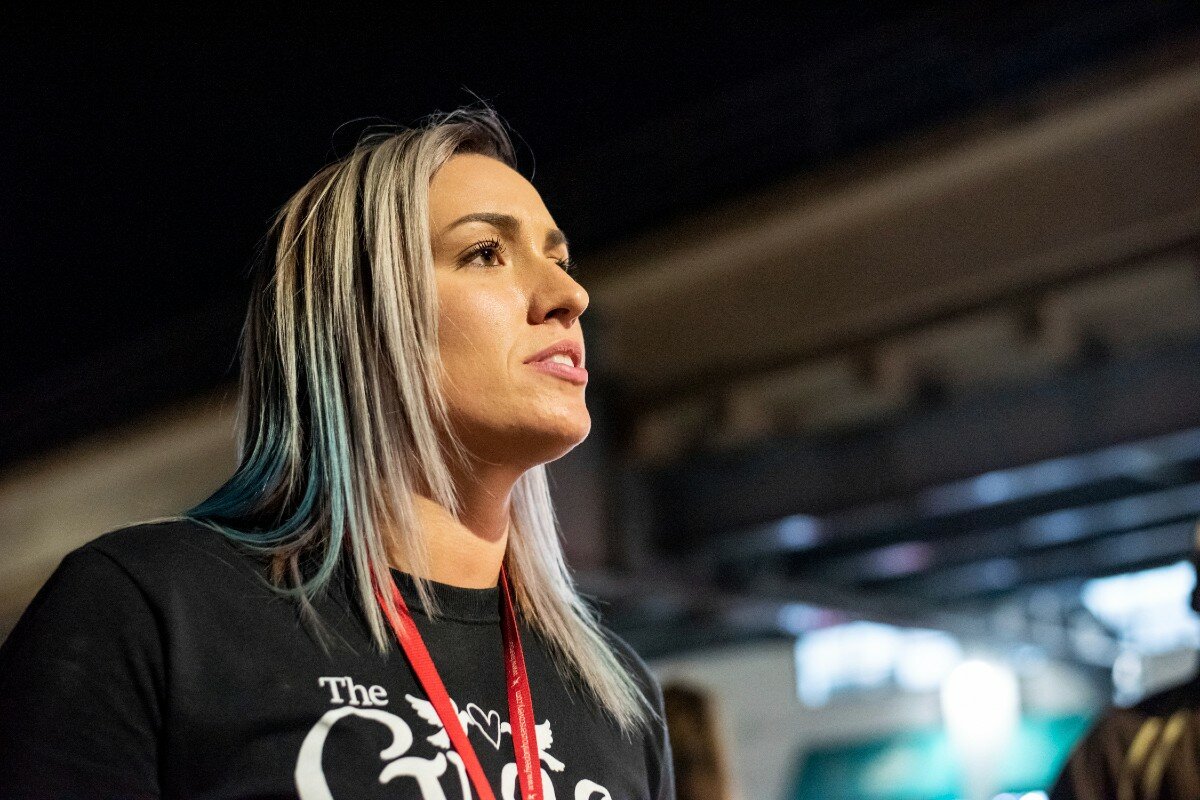
The Grace Project is the story of one woman’s journey of redemption and hope, and a developing quest to “pay forward.” Megan Cohen emerged from nearly a decade of drug addiction thanks in part to the kindness of strangers. A year into sobriety, she started giving back. First, it was to help those living on the streets of Philadelphia. But her generosity continues to sprout wings. She recently started the “Give a Little Hope” program for children in her community dealing with poverty, illness, or a parent’s addiction. “I didn’t want The Grace Project to only be about addiction. I wanted it to be about hope,” she says. “Because my story is not one about addiction. It’s about hope and the power that hope can have, and when it’s restored in you, what it can do.” – Dave Scott, audience engagement editor
Note: This audio story is designed to be heard, but we appreciate that listening might not be an option for everyone. You can read a transcript of this episode here.
The Grace Project
Other headline stories we’re watching
(Get live updates throughout the day.)The Monitor's View
The next big leap into an unseen universe
- Quick Read
- Deep Read ( 2 Min. )
-
By the Monitor's Editorial Board
The space-based Hubble Space Telescope has looked farther into the cosmos than anything before it and has made great discoveries. Now it is about to be eclipsed by a telescope that will look even farther out – much farther. The long-awaited, $10 billion James Webb Space Telescope is scheduled for launch Dec. 18. After it is fully operational next year, “the amazing science that will be shared with the global community will be audacious and profound,” says Thomas Zurbuchen, associate administrator for the Science Mission Directorate at NASA.
Once again humans are on the cusp of expanding their ability to view and comprehend what has so far surrounded them unseen.
The next big leap into an unseen universe
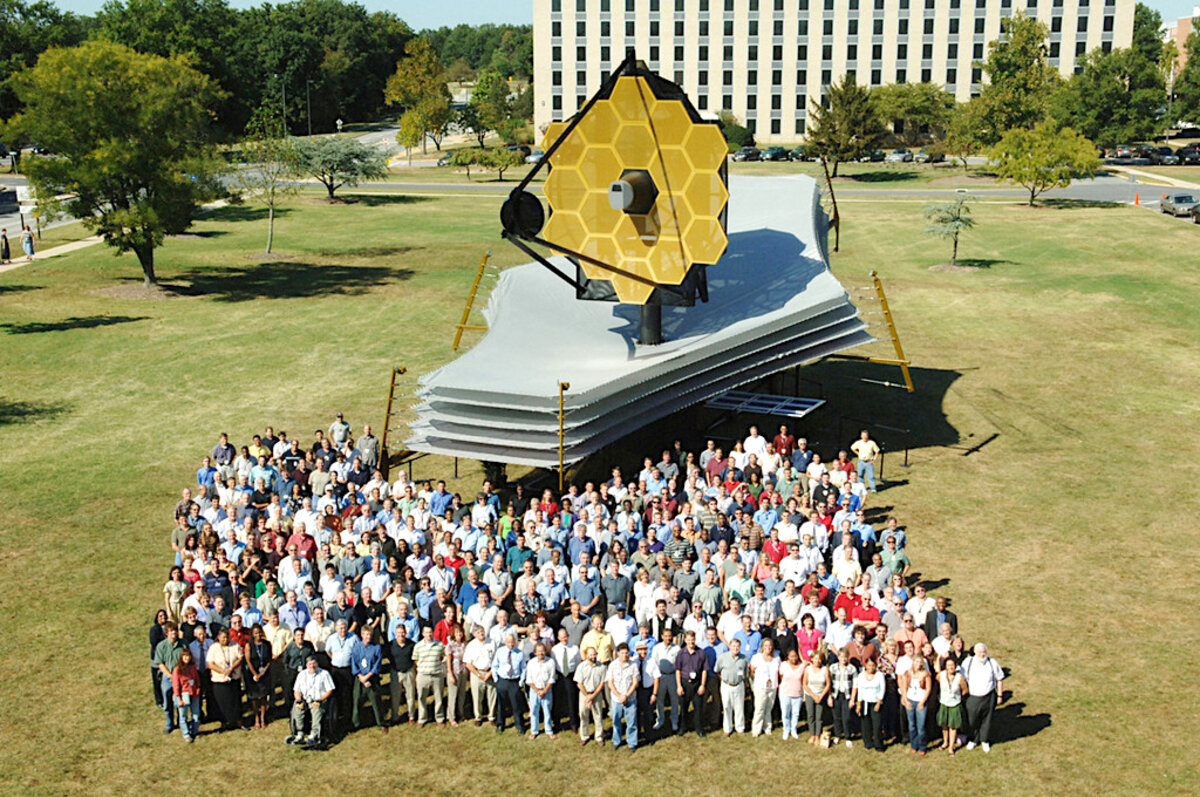
The space-based Hubble Space Telescope has looked farther into the cosmos than anything before it and has made great discoveries. Now it is about to be eclipsed by a telescope that will look even farther out – much farther. The long-awaited, $10 billion James Webb Space Telescope is scheduled for launch Dec. 18. In a series of hold-your-breath steps, it must travel to a stable position where Earth and the sun hold equal gravitational pull on it – about four times farther away from Earth than the moon. Then it must gingerly unfold its giant reflective mirror, much larger than Hubble’s and 100 times more powerful.
After it is fully operational next year, “the amazing science that will be shared [from the JWST] with the global community will be audacious and profound,” says Thomas Zurbuchen, associate administrator for the Science Mission Directorate at NASA.
Gazing deeper into space will mean peering farther into the past, observing galaxies that existed early in the formation of the universe. The result could be a revolutionary new understanding of how the universe evolved over the last 13.8 billion years.
“It will simply open gigantic new windows,” says Günther Hasinger, director of science at the European Space Agency. The ESA and the Canadian Space Agency are partnering with NASA on the JWST project.
In another landmark step for space exploration, a new report that is issued only once every 10 years lays out ambitious plans for using astronomy – both space-based and ground-based telescopes – to try for quantum leaps in understanding the universe. The so-called decadal survey, the result of three years of research, and based on hundreds of scientific papers and proposals, will go far toward setting the agenda for U.S. astronomy long into the future.
“The coming decades will set humanity down a path to determine whether we are alone,” the report concludes. “Life on Earth may be the result of a common process, or it may require such an unusual set of circumstances that we are the only living beings within our part of the galaxy, or even in the universe. Either answer is profound.”
More than four centuries ago, pioneering astronomers such as Johannes Kepler and Galileo Galilei used primitive telescopes to uncover thought-expanding new views of the moon’s surface, and reveal other nearby celestial objects, such as Jupiter’s moons, that were invisible to the naked eye. Now their high-tech successor, the JWST, will look out from space itself, into the deepest reaches of the universe. Once again humans are on the cusp of expanding their ability to view and comprehend what has so far surrounded them unseen.

A Christian Science Perspective
Each weekday, the Monitor includes one clearly labeled religious article offering spiritual insight on contemporary issues, including the news. The publication – in its various forms – is produced for anyone who cares about the progress of the human endeavor around the world and seeks news reported with compassion, intelligence, and an essentially constructive lens. For many, that caring has religious roots. For many, it does not. The Monitor has always embraced both audiences. The Monitor is owned by a church – The First Church of Christ, Scientist, in Boston – whose founder was concerned with both the state of the world and the quality of available news.
Refuge
- Quick Read
- Read or Listen ( 1 Min. )
-
By Kate Gould
Wherever we may be, God’s angels of hope and healing are here to inspire and guide, as conveyed in this poem of prayer for migrants and refugees across the globe.
Refuge
Not pawns of human history
Not doomed by destiny
But sons and daughters of the Lord
Secure, protected, free.
You’re held in arms of Love divine
Wrapped up, safe and warm
Your needs are now provided
You’re sheltered from the storm.
No weary years of wandering
Through wilderness, alone
But borne on wings of angels
You’re carried safely home.
Soul has infinite resources with which to bless mankind....
– Mary Baker Eddy, “Science and Health with Key to the Scriptures,” p. 60
Love is impartial and universal in its adaptation and bestowals.
– Science and Health, p. 13
(In these quotes, “Soul” and “Love” are used as Bible-based synonyms for God.)

A message of love
The jury decides
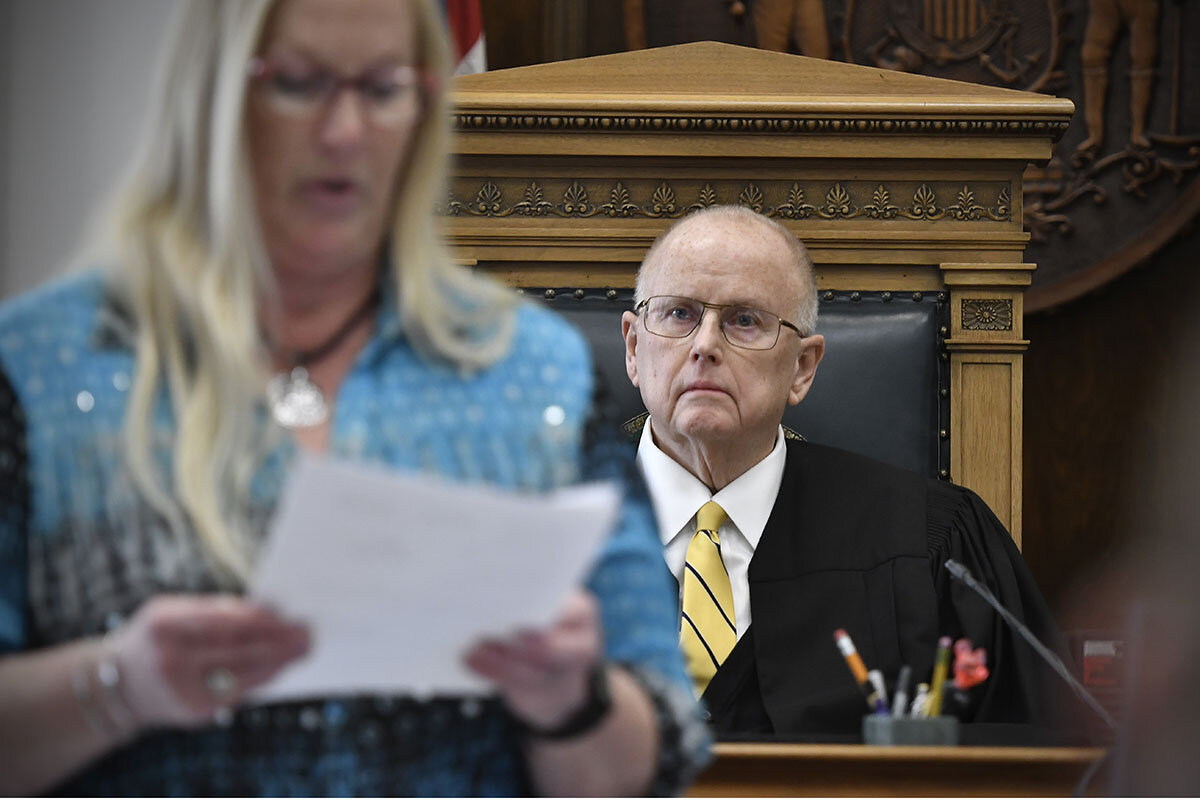
A look ahead
Come back Monday, when we’ll have an on-scene report about how Kenosha, Wisconsin, including the Black community, is reacting to the Kyle Rittenhouse verdict. And for more coverage of breaking news, see our First Look page.



